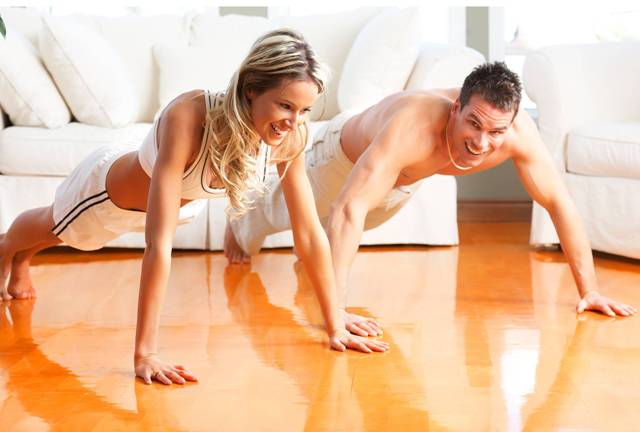Mastering the Chin-Up: A Comprehensive Guide on How Can I Improve My Chin-Up
The chin-up, a fundamental upper body exercise, is a true test of upper body strength and endurance. Whether you’re a beginner struggling to lift your body weight or an experienced fitness enthusiast looking to enhance your performance, the question often lingers: “How can I improve my chin-up?” In this comprehensive guide, we will explore various techniques, exercises, and strategies to help you conquer this challenging yet rewarding exercise.
Understanding the Basics
Before delving into specific improvement strategies, let’s revisit the basics of a chin-up. A chin-up is an upper body exercise where you lift your body towards a bar until your chin passes the bar. The primary muscles engaged in a chin-up include the latissimus dorsi, biceps, and upper back muscles.
Perfecting Your Form
The foundation of a successful chin-up lies in maintaining proper form. Correct form not only maximizes muscle engagement but also reduces the risk of injury. Follow these steps for the perfect chin-up form:
- Grip Placement: Grab the bar with a shoulder-width grip, palms facing you. This grip targets the muscles effectively and minimizes stress on the wrists.
- Shoulder Engagement: Pull your shoulders down and back, engaging your shoulder blades. This helps activate the back muscles and prevents unnecessary strain on the shoulders.
- Core Activation: Tighten your core throughout the movement. A strong core provides stability and ensures a straight, controlled ascent.
- Full Range of Motion: Aim for a full range of motion by extending your arms completely at the bottom and bringing your chin above the bar at the top. This ensures optimal muscle engagement.
Gradual Progression
Improving your chin-up performance requires a gradual approach that focuses on progressive overload. Start with the basics and gradually increase the difficulty of your workouts. Here’s a progression plan to guide you:
- Assisted Chin-Ups: Begin with assisted chin-ups using a resistance band or an assisted pull-up machine. This reduces the amount of body weight you need to lift, allowing you to build strength gradually.
- Negative Chin-Ups: Emphasize the lowering phase (eccentric) of the chin-up. Jump or use a step to reach the top position, then lower yourself slowly, resisting gravity. This helps build strength during the lowering phase, which is often neglected.
- Isometric Holds: Incorporate isometric holds at various points of the chin-up. Hold yourself at the top, middle, and bottom positions for a few seconds to improve strength and stability.
- Weighted Chin-Ups: Once you can comfortably perform multiple bodyweight chin-ups, add resistance using a weight belt or a weighted vest. Gradually increase the weight to continue challenging your muscles.
Targeted Exercises for Improvement
In addition to practicing chin-ups, incorporating specific exercises that target the muscles involved can accelerate your progress. Include the following exercises in your routine:
- Lat Pulldowns: Strengthen your latissimus dorsi with lat pulldowns. Adjust the weight to a challenging level and focus on the full range of motion.
- Bicep Curls: Strong biceps are crucial for a powerful chin-up. Include bicep curls in your workout routine to enhance your pulling strength.
- Scapular Retraction Exercises: Improve your ability to engage your shoulder blades by incorporating scapular retraction exercises. This includes face pulls, band pull-aparts, and scapular retractions.
- Core Strengthening: A strong core provides the stability needed for a controlled chin-up. Include exercises like planks, leg raises, and Russian twists to target your core muscles.
Consistency and Patience
Improving your chin-up performance is a journey that requires consistency and patience. Set realistic goals, track your progress, and celebrate small victories along the way. Remember that building strength takes time, and each workout contributes to your overall improvement.

Variations for Continued Progress
As you advance in your chin-up journey, incorporating variations can add diversity to your routine and target different muscle groups. Explore the following variations:
- Wide Grip Chin-Ups: Emphasize your upper back by using a wider grip. This variation engages different muscle fibers, contributing to overall strength.
- Commando Chin-Ups: Target your biceps and brachialis with commando chin-ups. Grip the bar with one hand facing you and the other facing away, alternating sides with each repetition.
- L-sit Chin-Ups: Challenge your core by performing chin-ups with your legs extended in an L-sit position. This variation enhances overall body control and stability.
- Mixed Grip Chin-Ups: Change your grip by having one palm facing you and the other facing away. This grip variation can enhance your grip strength and forearm development.
Listen to Your Body
While it’s essential to push your limits for improvement, it’s equally crucial to listen to your body. Pay attention to signs of fatigue, and allow adequate time for recovery. Overtraining can hinder progress and increase the risk of injury, so strike a balance between intensity and recovery.
And so
Improving your chin-up performance is a challenging yet achievable goal. By focusing on proper form, gradual progression, targeted exercises, consistency, and patience, you can conquer the chin-up and elevate your upper body strength. Embrace the journey, celebrate your successes, and remember that each step forward is a step closer to mastering the chin-up. So, lace up those workout shoes, hit the gym, and let the chin-up challenge become a triumph in your fitness journey.




A must-read for anyone serious about mastering chin-ups
I appreciate the inclusion of mobility exercises and warm-up suggestions – often overlooked aspects that make a big difference.
As someone who’s been working on their fitness journey, this guide came at the perfect time.
Can’t wait to apply these tips to enhance my chin-up game!
The breakdown of proper chin-up form and the emphasis on engaging the right muscles were incredibly helpful.
Cool thanks, go to gym)